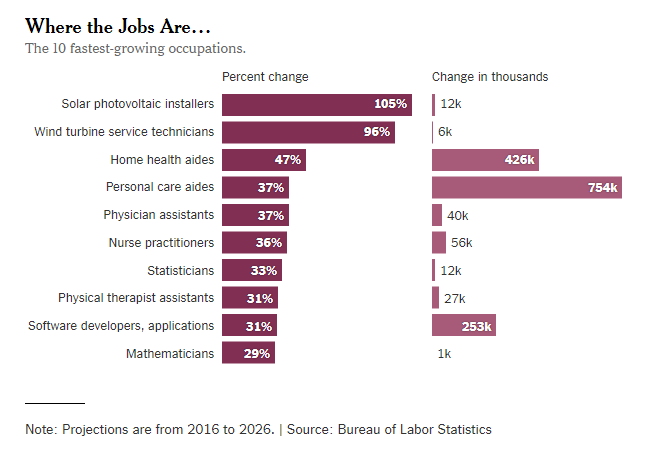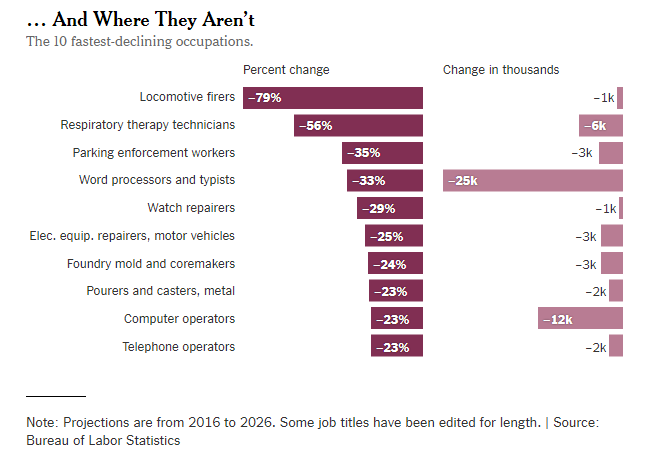(p. B1) Brittney Ball was living in a homeless shelter with her baby when she learned of a one-year program offering technical training, professional skills and an internship. She took the plunge.
Five years later, Ms. Ball is a software engineer in Charlotte, N.C., earning more than $50,000 a year. A 30-year-old single mother, she has health insurance, retirement savings and plans to vacation in Mexico this year.
“It showed me that I could do something different,” she said about the training program. “It really lit a fire under me.”
Preparing people for tech jobs is hailed as the great employment hope of the future. Cities and states across the country are rushing to teach elementary and high school students to write software. “Learn to code” is a career-advice mantra.
Mastering code and applying it in business, some experts say, holds the promise of becoming the modern path to the middle class for people without four-year college degrees. And nonprofit programs like those used by Ms. Ball are considered central to getting (p. B4) people there.
. . .
There are bright spots, but those programs remain mostly small scale so far, and expanding quickly has many complications. Training, mentoring and counseling people — often from disadvantaged backgrounds — is not a mass-production process.
For the full story, see:
(Note: ellipsis added.)
(Note: the online version of the story has the date May 19, 2019, and has the title “Tech Jobs Lead to the Middle Class. Just Not for the Masses.”)



